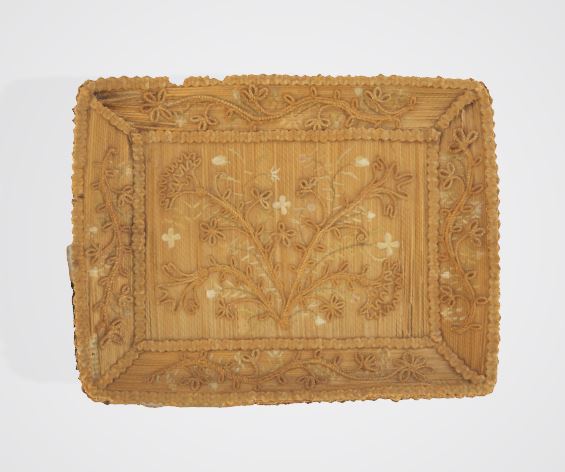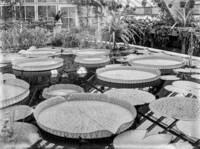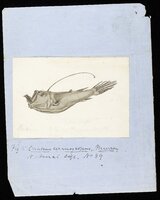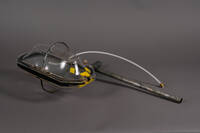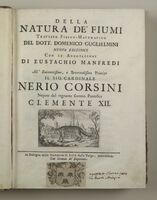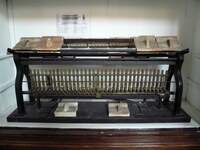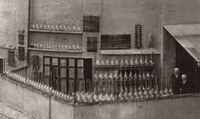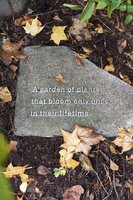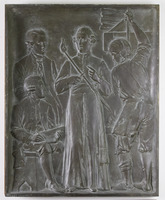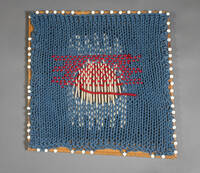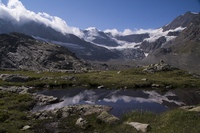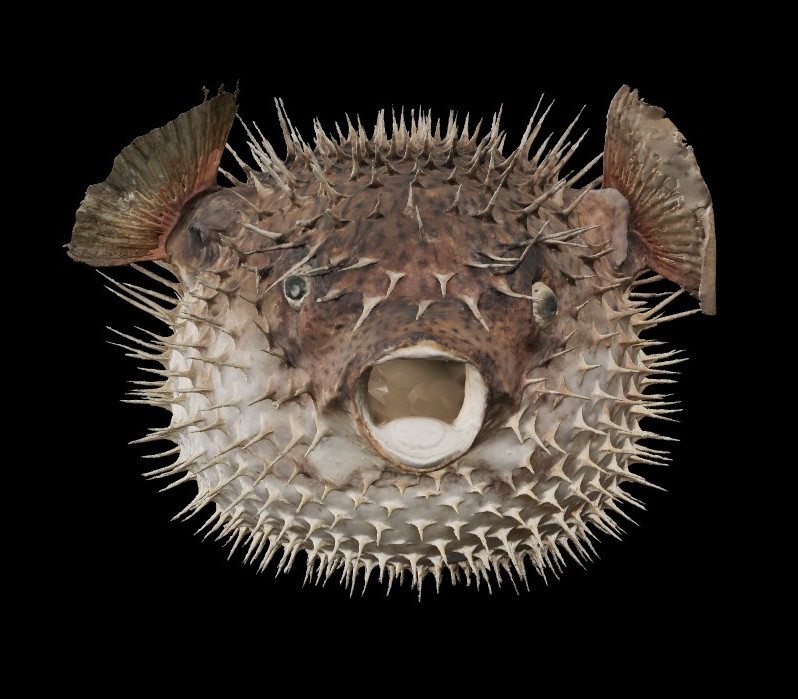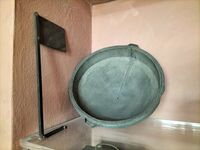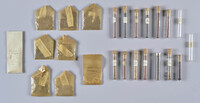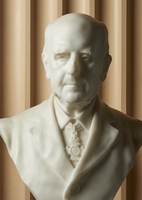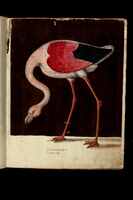Unveiling the Environmental Heritage of University Museums
Unveiling-the-Environmental
Item set
- Title
- Unveiling-the-Environmental
Items
25 items
25 items
-
3D model of Macrocnemus bassanii PIMUZ T 2477
A fairly common terrestrial carnivore and insectivore of up to 1.2 m in length. Superficially similar (but unrelated) to monitor lizards, with a low skull, large eyes and a slender form. -
Bandeja de ajuar, n.º inv. 529
The trousseau tray, made from wheat straw, highlights the relationship between human communities and their natural environment. This piece represents ancestral knowledge of the sustainable use of local plant resources, as well as the artisanal techniques passed down through generations. Furthermore, it emphasizes the value of cultural heritage as an integral part of environmental heritage, underscoring the interconnectedness between nature and human expressions, while providing an educational perspective on the importance of preserving both ecosystems and the traditions that rely on them. -
Botanic Garden
The Jagiellonian University Botanic Garden was created in 1783. It has an area of 9,6 ha and is the oldest botanic garden in Poland, presenting about 5.000 species and types of plant from the entire world. -
Carnet Alpes 1909-1910
This drawing of the Glacier des Evettes, sketched circa 1909-1910 by Emmanuel de Martonne in one of his 27 field notebooks, shows the interest of the French geographer for glaciers and his research on their erosive action. The drawing and notes are related to the photographic glass plate taken by Emmanuel de Martonne on the spot. -
Cell culture medium used in the laboratory
Cell culture medium used in the laboratory, made of hydrogel material. It is used in laboratories for the development of drugs and cell therapies, in which cells can be cultured. In the future, the hydrogel may potentially be used to grow new organs to replace damaged ones. -
Ceratias uranoscopus
The first drawing of the Ceratias uranoscopus, the stargazing seadevil, drawn by Sir John Murray aboard HMS Challenger during its expedition to learn more about the deep sea. The University of Edinburgh holds the remnants of the archive of the expedition and printing process of the Reports. -
Cuvette
A measurement chamber, or cuvette, is used in forest research. Forest researchers have used these cuvettes to measure the carbon metabolism of trees, meaning the carbon dioxide that is bound during photosynthesis. Cuvettes have been secured to a tree stem, with a branch, for example, placed inside. During most of the time on the stem, the cuvettes have been open, which means the conditions within them have roughly corresponded to those outside; in other words, the air inside has not become too warm. At regular intervals, the cuvettes have been closed for a measuring sequence, which has changed the gas concentrations within. These changes have allowed researchers to calculate, among other things, the photosynthesis and evaporation rates of the leaves or needles. This automated measuring has enabled detailed assessments of the carbon metabolism of the tree. Thus, cuvettes have helped scientists understand the role of forests in climate change. -
Della natura de' fiumi: trattato fisico-matematico [A physico-mathematical essay on the Nature of Rivers]
Domenico Guglielmini (1655-1710) was an Italian mathematician. In 1686 he was nominated “general intendant of the waters” in the Bologna area. Thanks to the fame he gained through hydraulic works, in 1694 Gugliemini obtained the chair in hydrometry at the University of Bologna. This book, first published in 1697, is considered his masterpiece. It discusses the nature of rivers and their parts, the motion of water, estuaries and confluents, riverbanks, and the kind of materials carried by rivers. The use of Italian (instead of Latin) demonstrates Guglielmini's intention to circulate the text among a relatively wide audience, which could appreciate the public usefulness of his researches. What is presented here is the second edition of the treatise, with the annotations of Eustachio Manfredi, who was Gugliemini's successor in the office of “general intendant of the waters” in Bologna. -
Gas Furnace
Gas furnaces were widely used in the 19th century and the first half of the 20th century for chemical analysis. In such devices, a long horizontal iron gutter is placed over the flames of numerous burners, covered with removable refractory tiles; on this gutter is placed a glass tube resistant to high temperatures. The substance to be analysed is placed inside the tube . By burning it, it is possible to determine its constituent elements and their quantity. Practically, a weighted amount of a organic substance to be analysed was put in a vessel of ceramic inside the tube, then the temperature of the tube was raised up to obtain gaseous products of C, N, H, then collected and analysed. The furnace shown in the photograph was used by Giacomo Ciamician in the chemistry laboratory at the University of Bologna in his research on chemical reactions in plants and the systematic study of the chemical action of light. -
Giacomo Ciamician and Paul Silber
Giacomo Ciamician (1857-1922) was a pioneer in the study of photochemical reactions and their applications. However, at the time, the light sources in the scientific laboratories were too weak to conduct meaningful experiments. He therefore had to use sunlight for his researches. To this end, he used a terrace of the Institute of Science of the University of Bologna. In this picture, dating from the first decade of the 20th century, he inspects the flasks that contained the organic substances whose light induced transformations he wanted to study together with his friend and collaborator Paul Silber (1851-1932). -
Hyoscyamus niger
Anatomical model of the plant Hyoscyamus niger, made of papier-mâché, wire, and plaster on a wooden base. It was created by the Berlin-based company Robert Brendel in 1882. A clastic model that can be disassembled to reveal the different parts of the flower's anatomy. -
Ideas
Katie Paterson’s Ideas pose questions about deep time, and the limit of what is real and what is imagined. These short haiku-like three-lined sentences, rendered in stainless steel, are intended to take shape in the imagination of whoever reads them, so becoming an expression of the idea itself. In the largest site responsive presentation of the work to date, one hundred existing and newly created Ideas have been brought together and installed across selected locations at the University of Edinburgh’s King's Buildings (KB) campus. Specially conceived to mark the campus Centenary and celebrate the College of Science and Engineering, the Ideas are located across an array of buildings (both outside and in), as well as in gardens, grounds and hidden and unexpected places, at varying levels, high and low. -
Jan Pieter Minckelers (1748-1824): pioneer of coal gas
These bronze reliefs are a copy of the reliefs on the memorial for Jan Pieter Minckelers (1748-1824), erected in Maastricht in 1904 by sculptor Bart van Hove (1850-1914). Minckelers was a lecturer at the University of Leuven and in 1783, he succeeded in producing the very first lighting gas. The reliefs show how Minckelers, supported by the Duke of Arenberg, released the very first gas balloon in the Low Countries on the lawn in front of Arenberg Castle on 20 November 1783, and how already in the following year his own laboratory was illuminated with the technology. The artist donated the reliefs to the university at the inauguration of the statue in Maastricht. -
Knitting darning sample used as a teaching model
A framed knitting darning sample used as a teaching model and visual aid in the training of craft teachers. The darning is done using the cross-stitch patch technique. Repairing and maintaining clothing is responsible and directly reduces textile waste by extending the garment's lifespan. -
Lyell bead Rain Drops
Fossilised rain drops collected by Sir Charles Lyell in the 1840s or 1850s. Lyell suggested that measuring the fossilized indentations of raindrops might reveal details about the ancient atmosphere. -
Pez globo, nº MAMF-ETM-339
Dried Pufferfish. A unique representation of biodiversity and a testament to academic efforts to document, preserve, and study species from aquatic ecosystems. This specimen, originating from a university collection, illustrates the historical and current role of universities in studying the environment and conserving its natural heritage. Furthermore, it provides an educational and scientific perspective that highlights the importance of marine ecosystems and the need to protect them in the context of global environmental change. -
Photography of Evettes' glacier
This is one of the photographs under glass plate of the collection "Emmanuel de Martonne " which contains about 11,000 pictures. It shows the interest of geographer E. de Martonne for glaciers and his questioning on their erosive action.The handwritten legend on the original document reads: "Alps: Valleys, internal alpine massifs: Maurienne: Glacier des Evettes (Hte-Maurienne) seen from the refuge, middle glacial drift - terminal basin with small lakes" . -
Rain gauge
In the 18th century, the University of Bologna joined the European network of meteorological observations. Daily records of temperature, pressure, winds and meteors were recorded from 1782 to 1792, and then continued without interruption from 1813 to the late 20th century. It is therefore possible to document the climate in Bologna for more than two hundred years and assess the impact of the changes that have taken place over this period. This rain gauge is one of the weather station instruments held by the University Museum. -
Seeds of forage plants collected by prof. dr. Amaat Dumon
Serradella, alfalfa and sand vetches are just a few examples of forage crops that have left their mark in the archives of Amaat Dumon, professor of agricultural sciences. As head of the Breeding Station of the Belgian Farmers' Union, of the university Laboratory for Applied Genetics and of the Flemish department of the General Inspection Service for Seeds and Seeds, Dumon was an expert in the extraction, propagation and breeding of seeds. His remarkable didactic collection includes dozens of test tubes, sachets and aspirin tubes filled with colorful seeds. -
Sir Archibald Geikie
Marble bust of Sir Archibald Gelkie, Professor of Geology at the University of Edinburgh from 1871-1882. -
Soldanella pusilla specimen collected by Wilhelm Schilber in June 1918 in Davos, Switzerland
Conserved alpine plant, originally collected to document the local occurrences on summits, provides important information about effects of climatic warming in expanding altitudinal distribution during the past 100 years. -
St. Kilda Photo Album
Naturalist Robert Atkinson embarked on a survey of Hebridean Islands in the mid-1930s to survey and count the Leach's fork-tailed petrel. He landed on St Kilda in July 1938, which had been evacuated in 1930. Atkinson captured the transition and re-wilding of the island during his search for the rare petrel, going into vacant cottages and buildings. This gentle photograph captures a small wren resting in the warm light of a window in the old School House. -
The herbarium of the Biblical Museum
The herbarium of the Biblical Museum or 'Musée biblique' of KU Leuven consists of about ninety frames with dried flowers and plants, collected by Jozef Vandervorst (1884-1959) in Palestine. The identifying cards mention the scientific and vernacular name of the plants, their provenance and some biblical references. The herbarium further includes more than fifty unidentified dried plants, which have not yet been framed and a few small boxes with seed samples. Vandervorst was a student at the renowned École biblique et archéologique française de Jérusalem and in 1910, he was charged by Rector Paulin Ladeuze (1870-1940) with building up the collection of the newly founded Musée biblique of the Leuven university. The main purpose of this museum was to introduce the students of theology to the material culture of the Holy Land at the time of Jesus. -
Watercolour tables commissioned by Ulisse Aldrovandi
Ulisse Aldrovandi (1522-1605) is one of the founders of modern natural history. He directed the Botanical Garden of the University of Bologna for a long time and built up a huge collection of natural specimens. Aldrovandi is also remembered for his 17-volume work "Storia Naturale'". He commissioned numerous painters, draughtsmen and other craftsmen to produce the more than 4000 illustrations that complement this work.


